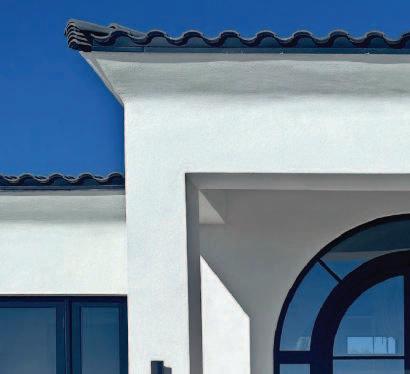Southwest Gardening





Hit every note
Make them a feast for eyes, ears, nose and other senses.

















Hit every note
Make them a feast for eyes, ears, nose and other senses.











In metro Phoenix, cultivating herbs indoors and outdoors requires strategic planning to accommodate our sunny, arid climate.
For indoor herbs, select varieties that thrive in containers with proper drainage and ample sunlight, such as mint, chives and parsley. For outdoor cultivation, opt for drought-tolerant herbs like oregano and sage planted in well-draining soil and positioned in areas with partial shade to mitigate intense sun exposure.
Regular watering, mulching and occasional pruning are essential for healthy growth. By adapting your gardening style to our environment, you can enjoy a flourishing herb garden indoors and outdoors year-round.
Here’s how to grow the ultimate Phoenix herb garden.


What herbs grow best in Phoenix?
Anne LeSenne is an assistant agent in horticulture at the University of Arizona Cooperative Extension. She says these herbs grow well in metro Phoenix:


h Rosemary
h Basil
h Chives
h Thyme
•

•

•

h Sage
h Oregano
h Mint
h Lavender
h Mexican tarragon
When can I plant herbs in Phoenix?
Herbs can generally be planted throughout the year. Optimal times are during the cooler months, typically from late September to early November, or in early spring from February to April.
Planting during these periods allows herbs to establish themselves before the intense summer heat or cooler winter temperatures arrive, aiding in root development and acclimation to the environment. Some herbs may benefit from planting after the last frost date in spring or growing as annuals during the cooler months.



According to LeSenne, herbs in the

Continued from Page 3SP
desert Southwest can generally be grouped into two categories: cool-season annuals, which complete their life cycle within one growing season during cooler months, and perennials that live for multiple growing seasons, often returning year after year from their roots.
What is the best container to grow herbs indoors?
Choosing the right container is crucial for successful indoor herb gardening. Here are some factors to consider:
h Drainage: Ensure containers have adequate drainage holes to prevent water accumulation and root rot.
h Size: Choose containers of appropriate size for your herbs, considering their growth habits and root systems.
h Material: Containers can be made of plastic, ceramic, terracotta or fabric, each with its advantages and disadvantages. Consider factors such as weight,

moisture retention and durability.
h Portability: Choose lightweight containers or those with built-in handles if you expect to move the pots around.
“Pots are perfect for small yards or patios,” LeSenne said. “It doesn’t matter what kind of soil is in the yard. Contain-

ers can be filled with a rich, free-draining soil mix to fit the needs of each plant. In the summer, pots can be moved to shadier spots and frost-sensitive plants can be moved to a protected location in the winter.”
What herbs don’t like heat?
Some herbs are more sensitive to heat and tend to seed prematurely when exposed to high temperatures. Here are a few herbs that generally don’t thrive in extreme heat:
h Basil
h Cilantro
h Parsley
h Chervil
h Mint
These herbs can be grown in hot climates with proper care, such as providing shade, adequate water and harvesting leaves regularly. Additionally, planting these herbs during the cooler months or protecting them from the intense midday sun can help them thrive in hot climates.
“Some herbs, such as basil, and rosemary, are true sun lovers, but during the summer in the Southwest the sun can

be very intense,” said LeSenne.
What herbs are low maintenance?
LeSenne says that any herb is low maintenance. Most herbs are resilient, drought-tolerant and adaptable, making them ideal choices for beginner gardeners or those with limited time for gardening.
Can you grow herbs indoors without sunlight?
Growing herbs indoors without natural sunlight is possible with artificial grow lights. To succeed in this endeavor, it’s essential to provide appropriate lighting, air circulation, humidity levels and careful watering.
Some herbs, like mint, chives and cilantro, are more tolerant of low light conditions and may fare better indoors without direct sunlight. Using full-spectrum LED grow lights and rotating herb pots regularly can help ensure even growth and development.
Got a story you want to share? Reach out at Tiffany.Acosta@gannett.com . Follow @tiffsario on Instagram.





‘Experiment, don’t be afraid to fail’
Dave and Jenny Marrs have gone back and forth to Italy at least half a dozen times over the past year with their five kids in tow. The reason? The hosts of HGTV’s “Fixer to Fabulous” have just finished renovating a 400-year-old Italian villa — their most challenging project yet. h The six-episode “Fixer to Fabulous: Italiano” aired on Tuesday, March 12. h “We were completely out of our element, and it was very stressful,” Jenny Marrs said. “But it was an adventure. I think it was the most creatively fulfilling project we’ve done.”
The couple, married for 18 years, abandoned corporate jobs in 2004 and moved to Arkansas. Dave Marrs launched his own construction company and the couple started working together renovating houses.
“We were really young at the time and didn’t know any better,” Jenny Marrs joked, but the couple knew they wanted the creativity their business would give them. Before settling in Arkansas, they’d moved six times, experimenting with different renovations and designs along the way, and since launching their business, they’ve renovated hundreds of homes together.
HGTV’s “Fixer to Fabulous” hosts Jenny and Dave Marrs. PHOTO

David and Jenny Marrs’ participation in the Great American Home & Garden Refresh is part of a paid promotional agreement. In order to avoid any conflicts of interest, a freelancer wrote this article.
Continued from Page 5SP
HGTV approached the Marrses in 2016 for a concept that would follow their remodeling journey. “Fixer to Fabulous” is now in its fifth season.
Part of what has made the show so popular is the couple’s down-to-earth approach and the fact that they don’t sugarcoat it when problems arise—like discovering that a leaking fridge flooded a home’s crawl space with eight inches of water. Even as experienced home renovators, unexpected situations frequently arise, a great example for people thinking of tackling a home renovation on their own.
“I would start by telling anyone, even someone with experience, to hire a home inspector,” Dave Marrs said. “I still hire home inspectors. They’re not that expensive, but it’s another set of eyes to look at the project, and make sure you’re not missing anything.”
Even after 20 years in the home reno-

vation business, they say there will always be unexpected challenges that pop up, but that going in with as much information as possible can mitigate and lessen the blow of discovering something once a remodel is already underway. It’s also a good idea to make a plan, and if you’re out of your depth on a renovation project, don’t be afraid to call in a professional.
“There are times when I feel like I’m overwhelmed with a project, and I need to throw in the towel. If you’re going to pay a lot of money on a project, call in an architect, because having a plan and executing it will make all the difference,” Dave Marrs said. “At the end of the day, a house is just sticks and bricks. You can change things. You can fix problems. If a remodel is starting to impact your relationship, it might be time to hire a pro.”
When it comes to finding a professional contractor, Dave Marrs thinks the best way is still word of mouth, asking neighbors and people you trust for references. He also advises getting a few different people to bid on the project so you have options and feel comfortable.
“Building is like any other industry. You can look at it as the three points on a

ting products from companies for free, in order to feature them on their account, she said.
“Don’t compare your home to someone else’s. Use Instagram as a tool and a way to gain inspiration,” she noted. “Don’t assume that you know everything behind the pretty photo. There’s probably a lot more that you don’t see.”
When it comes to budding DIYers, the couple has some advice: Don’t be intimidated or afraid to do something on your own.
triangle: fast, good, and cheap ,” he says. “You can’t pick all three—you can pick two of them—if you want it cheap, it’s probably going to be fast, but it probably won’t be good.”
Then, there are Instagram DIYers that inevitably give followers fear of missing out.
Jenny Marrs reminds people that they shouldn’t use what they’re seeing on social media to set the bar for their expectations. Oftentimes, influencers are get-
They say it’s important to start with something small and simple, gain confidence and experiment while staying within your comfort zone, but don’t be afraid of failure.
“Our show is authentic because it shows our failures and the things that don’t work out for us,” Dave Marrs said. “But when we get together as a family, we figure it out, and we move forward. Rarely does it ever go right the first time, but you bounce back and do it again and
































Continued from Page 6SP
you learn from those experiences.”
There are plenty of DIY projects someone with little or no renovation experience can easily take on themselves, and even some that give a space a refresh with no major effort required. The couple advises homeowners to start with smaller rooms in the home and work in a small area to demolish and then finish it before moving on to the next project.
They say they frequently meet with people who buy a home, demolish everything and are left with shallow spaces, which then becomes overwhelming.
“In the kitchen, which gets dated quickly, you can change out hardware, add a pretty backsplash, or change cabinets. There are things you can do without having to gut it or rip things apart,” Dave Marrs said. “A bedroom is just four walls, a light and a door, so all you need is paint, tape and a weekend.”
Jenny Marrs suggests putting up new
artwork, framing new photos, rearranging furniture and changing out lighting, or adding layers of lighting, as quick ways to refresh a space without having to remodel. She says they’re always looking for inspiration, no matter where they are, even in restaurants or hotels. The key to their timeless yet contemporary style is to focus on classic materials and things that are handmade, like real stone, brass, marble, natural tile, and wood.
“Anything handmade or natural is always going to feel more timeless and classic,” she says. “We are not at all focused on trends because we want our homeowners to make their homes something they love. We try not to do something super trendy. We want it to be a timeless reflection of them.”
After their Italian adventure, the Marrses aren’t slowing down. They’re already renovating new places and getting ready to film the next season of “Fixer to Fabulous.”
“Jenny and I are dreamers—we love the challenge of a new project,” Dave Marrs said. “I don’t know what’s next beyond that, but that’s part of the joy in this. We’ll fall into something else.”

David Rios, a Palm Springs interior designer and hotelier, said that he uses both handymen and carpenters frequently in his work.
He explained that a carpenter is a skilled craftsman who typically works with wood. Their work often centers on projects such as crown moulding, baseboards, wainscoting and more. Rios said he has requested the services of carpenters to create custom headboards and to bring decorated and detailed designs to life in his projects for David Rios Designs and his new hotel venture, The Velvet Rope.
In contrast, a handyman is skilled in a number of different areas and can help with general fixes around your property. That might include hanging light fixtures, changing light switches,

fixing doorknobs, touching up paint jobs and more.
When does Rios know when to call one or the other? He said he’ll call a handyman when he knows he could do something himself, but he doesn’t have the time to do it. For a carpenter, he said it’ll usually be for a project he’s thought out and has a specific design for, and he has the money for it.
The cost between these two services is different − Rios said a carpenter might be two to three times more expensive − but they’re both considered small businesses that deserve support.
“It’s great to give appreciation to them versus larger corporations, and it keeps them thriving,” Rios said. However, he added that it’s getting harder to find carpenters who have “that craftmanship of beautiful woodwork.”






Simple online process. Hard results.



























































Awell-rounded garden should be a joy to see. And smell. And touch. And even hear and taste.
So-called “sensory gardens” offer opportunities to cover all bases. One of the nation’s largest opened in 2010 as part of the 250-acre Wickham Park near Hartford, Connecticut.
“We divided experiences in five garden rooms, each sense with its own ‘room’ and a final one for imagination,” said Jeff Maron, director emeritus of the park.
“In the different gardens, we try to put something that relates to the senses such as smell — plants with pleasant odors; taste — we use harvestable plants, such as fruits and berries; touch
—we use plants that are soft and are pointed; and sound — we use a water feature, a fountain and wind chimes.”
Here’s how gardeners can hit all five notes in their own sensory garden:
Pick plants that provide a variety of colors, textures and shapes, from vibrant flowers to muted grasses and shrubs. Taper plant heights, from ground cover to shrubs, and be sure to pick a mix that offers year-round interest, Maron advises.
Popular plants known for their fra-


Sensory gardens can include flowers that draw butterflies for visual stimulation.
TINA MACINTYRE-YEE/ ROCHESTER DEMOCRAT AND CHRONICLEgrance include viburnum, lilac, hyacinth, jasmine, gardenia and garden phlox. Some can overwhelm neighboring scents, so be careful to separate them and use them sparingly. Milder but just as pleasing can be pine, nasturtium or herbs.

Fruits and vegetables are always options, but for those who don’t want to battle critters, flowers such as violets, pansies and bee balm are edible. Otherwise, herbs such as thyme, rosemary, basil and dill are easily grown and offer a useful bonus for cooks.
From the gentle whisper of wind through grasses to the rattle of dried seedpods, gardens can offer audible pleasure. Gardeners can augment those sounds of nature by installing feeders or planting flowers to attract birds and bees, or by adding a water feature or chimes.
From rough bark to smooth succulents, feathery ferns and soft lambs ear, gardeners should seek a variety of textures and surfaces to complement the sights, sounds, smells and tastes of a well-curated sensory garden.































































Our custom iron doors are carefully crafted by our team of highly skilled metal workers, iron forgers, and design consultants to meet your specific requirements. Whether you’re looking for a classic, timeless design or a modern, contemporary look, we can create the perfect door to match your style and personality.









